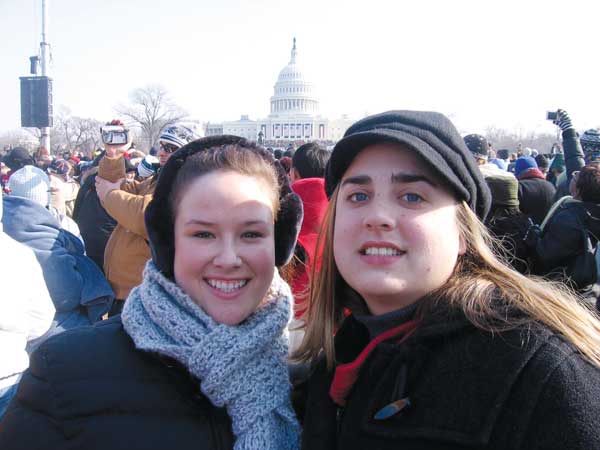By Sue De Pasquale, Photos by Chris Hartlove
The future of scientific research is teamwork.

In his “Roadmap for Medical Research,” unveiled in September 2003, Elias A. Zerhouni, Director of the National Institutes of Health, underscored the need for a paradigm shift in the way researchers collaborate. Traditionally, health research has been organized as a series of “cottage industries,” lumping researchers into distinct, departmentally based specialties, Zerhouni noted.
But as science has advanced it’s become evident, he says, that these traditional divisions will “impede the pace of scientific discovery.” As the nation’s primary source of funding for scientific research, the NIH, according to Zerhouni’s vision, must move “to remove roadblocks to collaboration so that a true meeting of minds can take place.”
At the Johns Hopkins University School of Nursing, nurse research leaders including Jerilyn Allen, ScD, RN, FAAN and Victoria Mock, DNSc, AOCN, FAAN enthusiastically embrace this new direction.
“We were ahead of the game here at Johns Hopkins, particularly at the School of Nursing,” notes Allen, associate dean for research. In recent years, Allen points out, many researchers from the School of Nursing have been conducting multi-disciplinary and transdisciplinary research with colleagues at the Johns Hopkins School of Medicine and the Bloomberg School of Public Health.
“The rationale for such collaboration,” explains Mock, “is that the science is stronger when we have input from multiple disciplines.” Such synergy, she says, allows researchers “to address the unanswered questions in a more scientific fashion.”
| There’s a “uniquely rich environment” at Johns Hopkins that facilitates collaboration, notes Allen. “The schools of Nursing, Medicine, and Public Health are in close proximity geo-graphically—and philosophically.” |
Mock and Allen emphasize that each discipline brings something unique to the table. Nurse researchers, traditionally, have been “more focused on the holistic component of care, the patient and family response to illness,” notes Allen.
“Physicians,” says Mock, “are typically more focused on the basic science and on finding a cure, while public health researchers are looking for solutions that will best address the needs of the broader society.” In the past, Mock says, “each of the three disciplines pursued problems from their own perspective, leading to an important gap in the development of knowledge-a kind of ‘tunnel vision.'”

In 2004, the School of Nursing established the Center for Collaborative Intervention Research (CCIR). Its goal: to act as a “catalyst” to stimulate research alliances. Each year, through funding from the NIH National Institute of Nursing Research, the center funds three pilot studies that bring together researchers from nursing, medicine, and public health. In recent projects, research teams have collaborated to find ways to improve the lives of abused women, and to boost success rates of those who undergo kidney transplants. Mock is director of the CCIR.
CCIR-funded researchers aren’t the only ones at the School of Nursing who are doing multi-disciplinary research. “The majority of our nursing faculty have interprofessional and interdisciplinary research teams,” says Allen. “They include epidemiologists, psychologists, physicians, sociologists, and other professionals.”
| “The science is stronger when we have input from multiple disciplines,” says Mock. Such synergy allows researchers “address the unanswered questions in a more scientific fashion.” |
Allen notes that there’s a “uniquely rich environment” at Johns Hopkins that facilitates collaboration. “The schools of Nursing, Medicine, and Public Health are in close proximity geographically—and philosophically,” something not always found at other nursing schools. All three school deans—Nursing’s Martha Hill, Public Health’s Michael Klag, and Medicine’s Edward Miller—“are very collaborative. That’s their vision for research. It sets the stage,” says Allen.
In one effort to move forward in achieving the goals of the NIH roadmap, NIH leaders have begun piloting studies that would allow for multiple principal investigators on a single research project. Allen and Mock strongly support moving in this direction. “In the past,” says Mock, “the model was to have the physician on the team be the principal investigator.” Says Allen, “Nurse researchers today are the principal investigators, not just the collaborators.”
As they look to the future, both Allen and Mock are optimistic that the new trend toward “team” science will make possible advances in health that were previously unimagined. Concludes Mock, “It’s an exciting time to be a nurse researcher.”
 Class News
Class News Live from the 525
Live from the 525







